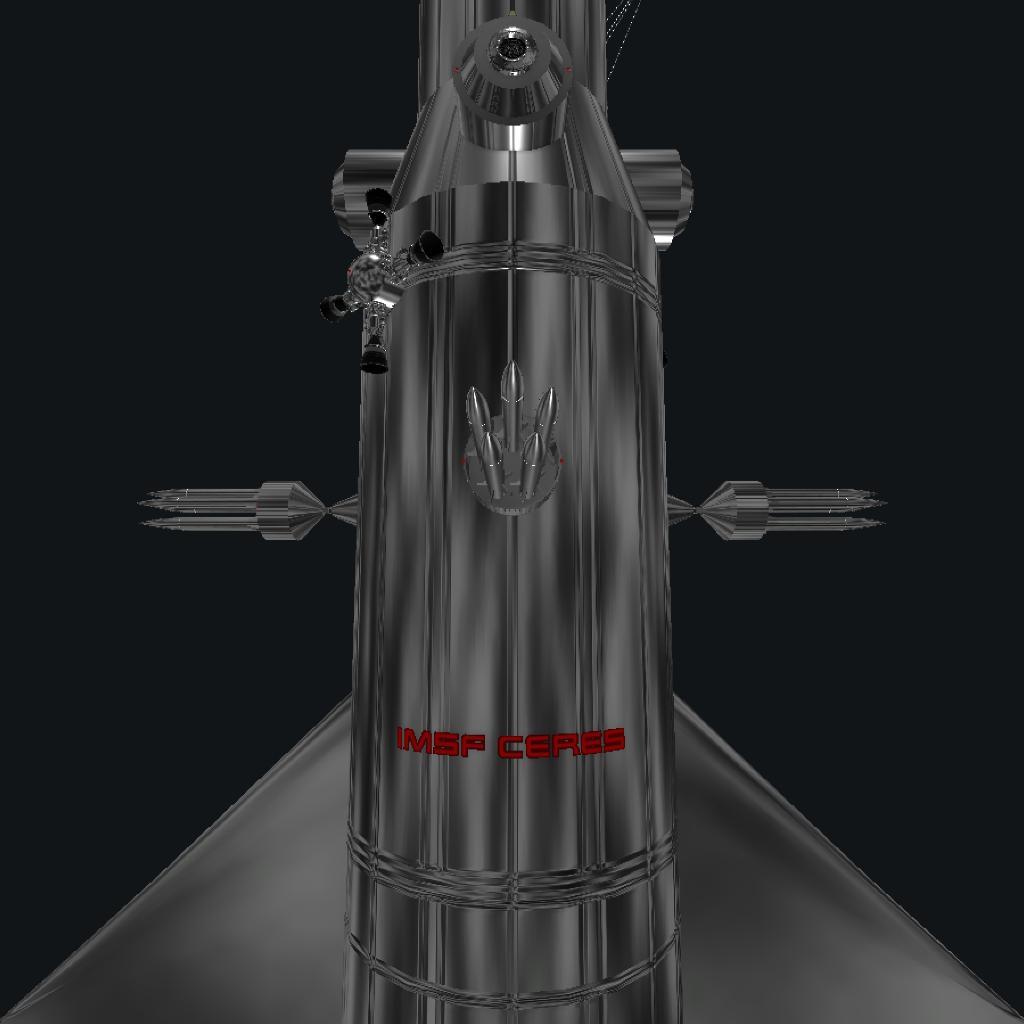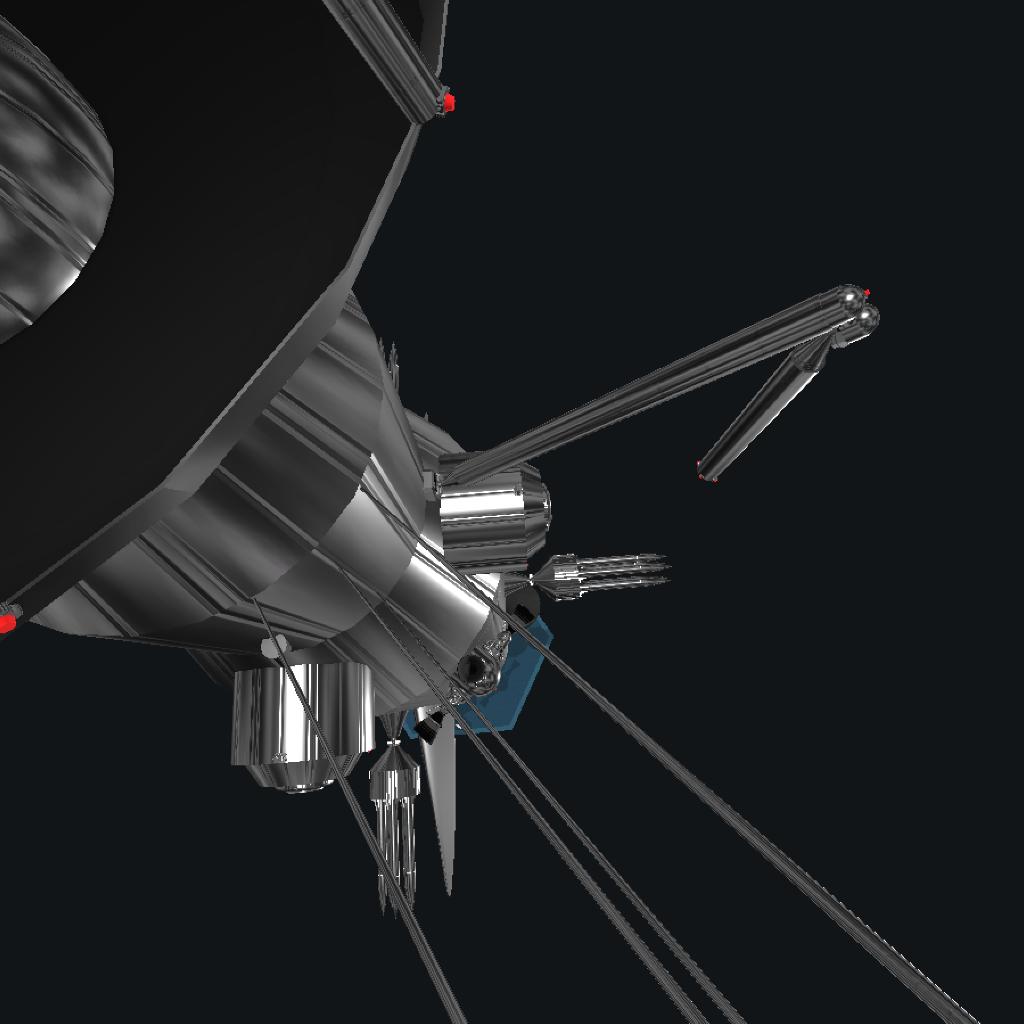The Ceres-class
The Ceres-class, sometimes referred to as the C-class, were a set of 53 spacecraft produced for the Imperial Martian Space Fleet. Of the 53 built 23 remain in service today, one remains as a shipwreck in the Isidis Basin, one in orbit (Apocenter: 77713km Pericentre: 56836km, decommissioned and unrecoverable due to costs and lack of incentive) and one decommissioned and in display at the Elysium National War Museum. The most famous Ceres-class spacecraft, the IMSF Ceres, was the first Heavy Cruiser spacecraft to be built. She was destroyed after holding off the entire Second Terran Invasion Force for almost 3 hours, providing the main fleet with enough time to refuel, rearm and intercept the invasion force, permanently stifling the ongoing ground invasion by Terran forces, and preventing their re-supply.
Design.
Displacing over 10700 tonnes (excluding main armament) and 12400 tonnes (including main armament), the spacecraft were designed to be all-purpose vessels, both heavily armoured and heavily armed. The main armament of the Ceres class were the "Crater Buster" missiles. With a dV of 7866.3 m/s, they were able to easily reach the majority of early war enemy vessels. Late war, as tactics in fleet positioning developed (where fleets orbit in difficult to intercept orbits such as polar and retrograde orbits), the missiles gradually became less viable due to the lack of dV to reach enemy fleets. The Ceres-class vessels were around 162 meters high, with a wingspan of around 83 meters and radius of main superstructure of 12.5 meters. The most striking feature of the Ceres-class was the "pretender antenna" a large antenna mounted on the front of the vessel. Whilst functioning as a very long range communication dish, its main focus was to draw enemy fire to it, as the antenna was designed to be inexpensive to produce/repair relative to enemy missile production cost. The main communication dish is a smaller dish capable of aiming at a target transmission source. The Ceres-class featured a magnetic extending arm used to guide less manoeuvrable vessels to one of the four docking ports. The Ceres-class featured one of the first missile defence systems, where 5 missiles mounted in omnidirectional aiming pods were able to provide total protection from enemy missiles with aiming provided by the on-board missile control systems. The missile control systems were also able to provide accurate positions of enemy vessels up to 700km from the heavy cruiser and were effective to within 7866.3 m/s of enemy velocity relative to the launching vessel. The Ceres-class feature wings capable of flight, with no control surfaces the majority of the control comes from the Methalox thrusters. The wings were used on occasion in extreme circumstances (for example the emergency landing of IMSF Arrokoth into the Isidis basin following a critical strike to its communication dishes, weapons and life support systems. Later sinking due to taking on water). The Methalox thrusters are larger, more powerful alternatives to Hydrazine RCS thrusters present on smaller vessels. The main thrusters of the Ceres-class were a set of 19 TKK-31 Dragon Engines. These nuclear engines were efficient enough to provide 21.34 km/s dV, although the first 12 Ceres-class featured the TKK-27 Dragon Engine variant which was able to provide only 5.29 km/s dV. The first 12 were re-fitted mid-war to keep up with the rest of the fleet when preforming required manoeuvres according to the Positioning Doctrine.
Armament list:
14 Crater Buster missiles
20 (loaded) + 60 (stored) Anti-missile defence missiles
Crater Buster missiles
Crater Buster missiles are missiles launched from heavy cruisers, battleships and dreadnoughts. They are constructed of a fuel tank and nuclear engine burning pure Hydrogen, 15.7 tonnes of explosives per buster missile and a Tungsten tip. The functionality of the Crater Buster missiles is to pierce enemy armour before detonating, causing catastrophic damage. The Crater Buster missiles are equipped with guidance systems capable of making small adjustments, enough to direct the missile to within 10 m of the desired strike zone on a vessel. The Crater Buster missiles are still used today on modern heavy cruisers. The Crater Buster missiles are strong enough to take out battleship armour with a well-placed strike. The missiles have a mass of around 108 tonnes in total fully fuelled, although few missiles ever need to be fully fuelled as the likelihood of a hit from a distance above 50km was very small.
List of Ceres-class vessels (events in Earth time):
Named after Martian asteroids:
IMSF Ceres
Named after Kuiper belt objects:
IMSF Varuna
IMSF Varda
IMSF Arrokoth
Named after asteroid belt objects:
IMSF Thalia
IMSF Julia
Named after Jovian moons:
IMSF Thyone
IMSF Theixinoe
IMSF Hegemone
IMSF Leda
IMSF Eukelade
IMSF Sponde
IMSF Herse
IMSF Carpo
IMSF Aitne
IMSF Lysithea
IMSF Pasithee
IMSF Orthosie
IMSF Ananke
IMSF Mneme
IMSF Taygete
IMSF Harpaiyke
Named after Saturnian moons:
IMSF Prometheus
IMSF Pallene
IMSF Janus
IMSF Epimetheus
IMSF Kiviuq
IMSF Hyrrokkin
IMSF Phoebe
IMSF Kari
IMSF Aegir
IMSF Siarnaq
IMSF Tarvos
IMSF Fenrir
IMSF Ymir
IMSF Suttungr
IMSF Fornjot
IMSF Jarnsaxa
Named after Uranian moons:
IMSF Ophelia
IMSF Juliet
IMSF Cupid
IMSF Rosalind
IMSF Cressida
IMSF Francisco
IMSF Stephano
IMSF Caliban
Named after Neptunian moons:
IMSF Galatea
IMSF Larissa
IMSF Thalassa
IMSF Sao
IMSF Neso
Named after Plutonian moons:
IMSF Kerberos
IMSF Hydra
The Ceres-class were too large to be constructed on the ground and launched into space, they were instead assembled in space and the individual components launched into sub-orbital trajectories using a railgun. The tug stage then completed the orbit before Maintenance Sloop type spacecraft assembled the heavy cruiser.
Activation groups are self explainitory, there are no crater buster missiles for you to launch sadly (might add that later) Any issues let me know, enjoy your space voyage!
GENERAL INFO
- Created On: Windows
- Game Version: 1.0.909.1
- Price: $937,373k
- Number of Parts: 686
- Dimensions: 162 m x 61 m x 83 m
PERFORMANCE
- Total Delta V: 5.9km/s
- Total Thrust: 52.3MN
- Engines: 55
- Wet Mass: 1.07E+7kg
- Dry Mass: 1.27E+6kg
STAGES
| Stage | Engines | Delta V | Thrust | Burn | Mass |
|---|---|---|---|---|---|
| 1 | 19 | 5.3km/s | 17.4MN | 31.0m | 1.07E+7kg |
| 2 | 16 | 601m/s | 33.9MN | 2.9m | 1.07E+7kg |








